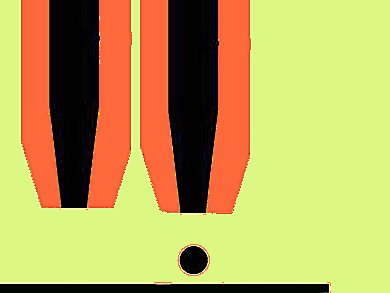The use of single crystals has lead to the development of semiconductor microelectronics and solid-state science. ‘Printed electronics’ is being explored for the manufacture of large-area and flexible electronic devices. Functional inks containing soluble or dispersed semiconducting materials are used. Because of the strong self-organizing tendency of the deposited materials the production of semiconducting thin films of high crystallinity – which is indispensable for realizing high carrier mobility – has not been successful so far.
Hiromi Minemawari, National Institute of Advanced Industrial Science and Technology (AIST), Tsukuba, Japan, and colleagues developed a method that combines the technique of antisolvent crystallization with inkjet printing to produce organic semiconducting thin films of high crystallinity.
A solution of a semiconductor and an antisolvent – a liquid in which a substance is insoluble – for the semiconductor are used as the two kinds of ink. The inks are individually printed at arbitrary positions to form a microliquid intermixture between the inks on the top of substrates. Optimized printing conditions enable controlled formation of patterned single crystal thin films having molecularly flat surfaces. This is in contrast to conventional inkjet printing processes that produce films with a non-uniform thickness distribution.
1,2-dichlorobenzene (DCB) was used as the solvent and N,N-dimethylformamide (DMF) as the antisolvent for the semiconductor 2,7-dioctyl[1]benzothieno[3,2-b] benzothiophene (C8-BTBT), yielding in thin-film transistors with average carrier mobilities as high as 16.4 cm2V-1s-1.
- Inkjet printing of single-crystal films,
Hiromi Minemawari, Toshikazu Yamada, Hiroyuki Matsui, Jun’ya Tsutsumi, Simon Haas, Ryosuke Chiba, Reiji Kumai, Tatsuo Hasegawa,
Nature 2012, 475, 364–367.
DOI: 10.1038/nature10313




